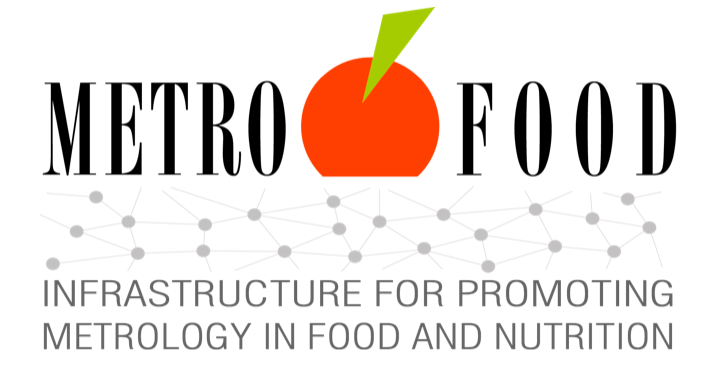Strengthening of the Italian Research Infrastructure for Metrology and Open Access Data in support to the Agrifood
Webinar METROFOOD-IT: High-Precision Technologies for Food Analysis
The METROFOOD-IT webinars held on February 20th and 21st once again highlighted the role of scientific research and technological innovation in supporting food quality and safety. The first online session was led by Professor Federica Bianchi from the University of Parma, focusing on "The role of high-resolution gas chromatography-mass spectrometry and chemometrics in metabolomics for the identification of new food product markers."
The presentation began by distinguishing between Food authenticity and Food safety: the former refers to verifying compliance with label declarations regarding origin, quality, processing techniques, and production technologies, while the latter relates to aspects of safety such as food hygiene and wholesomeness. Among the techniques used by researchers is high-resolution Mass Spectrometry (HRMS) coupled with chromatographic separation (LC, GC, GCxGC). In essence, the speaker highlighted how mass spectrometry is based on ion formation and their subsequent separation based on their m/z ratio. A current proportional to the number of ions present is generated in the detector. The data processing system records the electrical signals based on the m/z ratio and converts them into a mass spectrum, with m/z values on the x-axis and detector signal intensity on the y-axis.
High-resolution mass spectrometry offers several advantages, including high sensitivity, selectivity, mass accuracy, and the possibility of coupling with separation techniques. However, a significant aspect for this technique is extracting useful information: cleaning data, removing outliers, standardizing to create a model, and often scaling data to comparable scales.
During the webinar, some examples of this analysis technique were mentioned, including one related to 64 samples aged in oak barrels previously used for bourbon aging.
Food Imaging Using Environmental Scanning Electron Microscopy for Process Control
In the subsequent webinar, led by Professor Monica Mattarozzi from the University of Parma, another innovative analysis technique was discussed: "Food imaging using environmental scanning electron microscopy for process control." The session began by addressing the concept of resolution limit, i.e., the minimum distance between two points that can be observed as distinct. This limit varies significantly between the human eye and modern electron microscopy, which allows observation and characterization of organic and inorganic materials from micrometer to nanometer scales.
The structure of a Scanning Electron Microscope (SEM) was outlined, comprising several main components such as an electron source, electromagnetic lens system (condensers), electrostatic deflectors (coils), final lens (objective), sample chamber, high vacuum pumping system, detection systems, and monitor.
Professor Mattarozzi then delved into the details of food imaging using environmental scanning electron microscopy for process control, highlighting its advantages such as high flexibility and versatility, the ability to analyze samples in their native state, minimal risk of artifacts, and the possibility of conducting dynamic experiments directly in situ.
Food Texture and Consistency Profiles
Another set of topics addressed in the webinar was "Food texture and consistency profiles." In this case, researcher Valerio Miceli from ENEA emphasized the importance of rheology, the discipline studying the deformation and flow of food and other materials. Many consistency properties perceived when consuming food, such as creaminess, succulence, fluidity, friability, tenderness, and hardness, depend on rheological properties and behavior. Characterizing the rheological properties of food products is increasingly important for evaluating raw material quality, predicting material behavior during processing, and meeting conservation and stability requirements.
In particular, consistency is an important attribute of products as it affects handling and manipulation, habits, shelf life, and consumer acceptance. Texture analysis, the examination of food structure, plays a crucial role. During the February 21st webinar, the focus was on viscosity, the resistance of a fluid to irreversible position changes of its volume elements. Concrete examples of texture analysis on common foods like chocolate, ketchup, and fruit jam were provided, using tools such as gravitational viscometers.
METROFOOD-IT webinars will continue until mid-April, with two sessions scheduled for March 12th. At 10:00 AM, Prof. Cesare Manetti from Sapienza University of Rome will speak on "From the medicine of 4Ps to METROFOOD-IT: tools, models, and data to prevent, predict, personalize, and participate in the quality and safety of agri-food chains." At 11:00 AM, Prof. Federico Marini, also from Sapienza University of Rome, will discuss "Data analysis strategies for food quality control." Registration for both webinars is open until March 11th, 3:00 PM, on this page: https://survey.metrofood.eu/index.php/972187?newtest=Y&lang=it
Presentations available (italian language):
- The role of high-resolution gas chromatography-mass spectrometry and chemometrics in metabolomics for the identification of new food product markers
Professoressa Federica Bianchi- Department of Chemical, Life, and Environmental Sciences, University of Parma
Mail: - Food texture and consistency profiles
Dr. Valerio Miceli – ENEA
Mail: -
Food imaging using environmental scanning electron microscopy for process control
Professor Monica Mattarozzi - Department of Chemical, Life, and Environmental Sciences, University of Parma
Mail:






